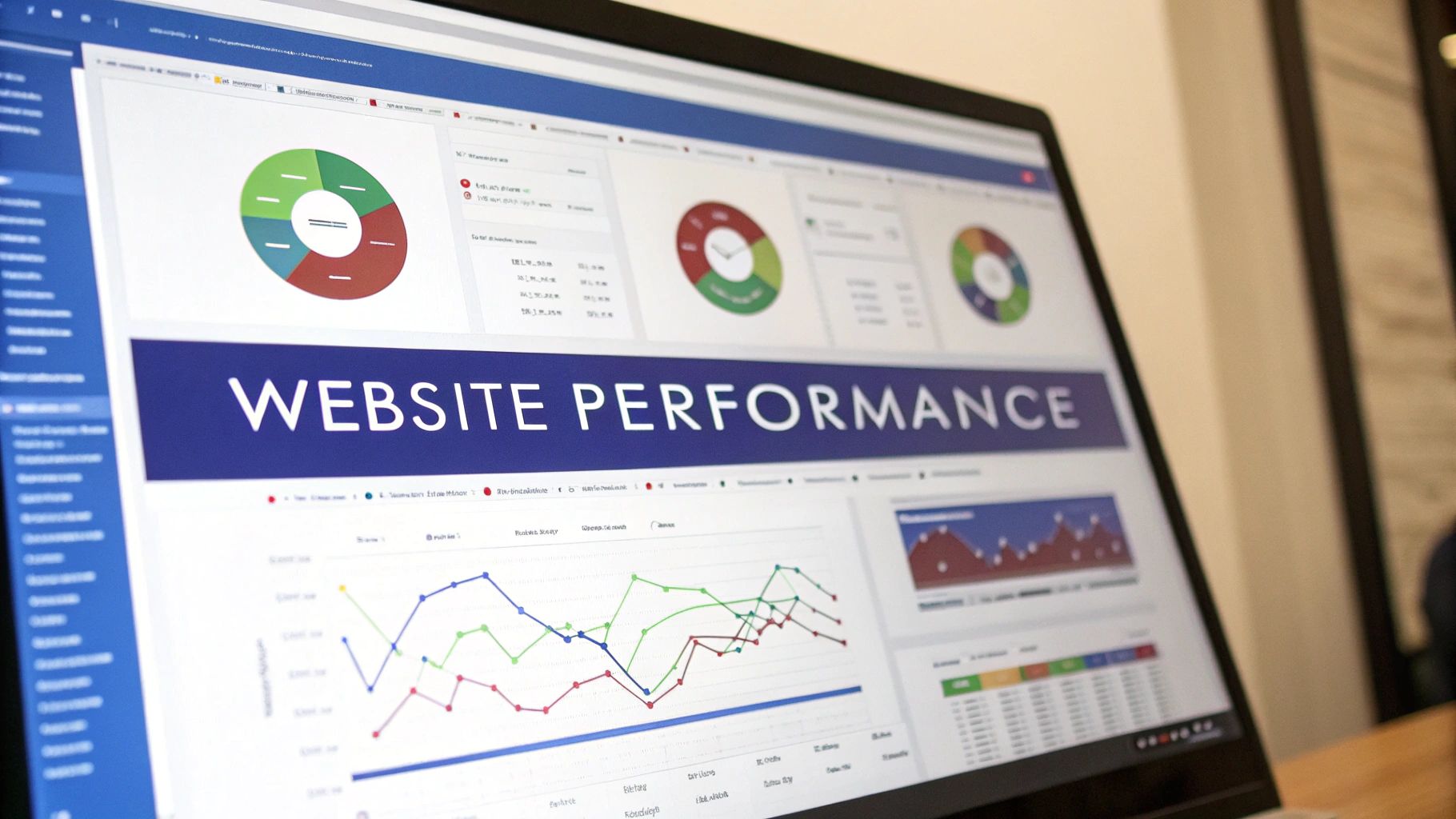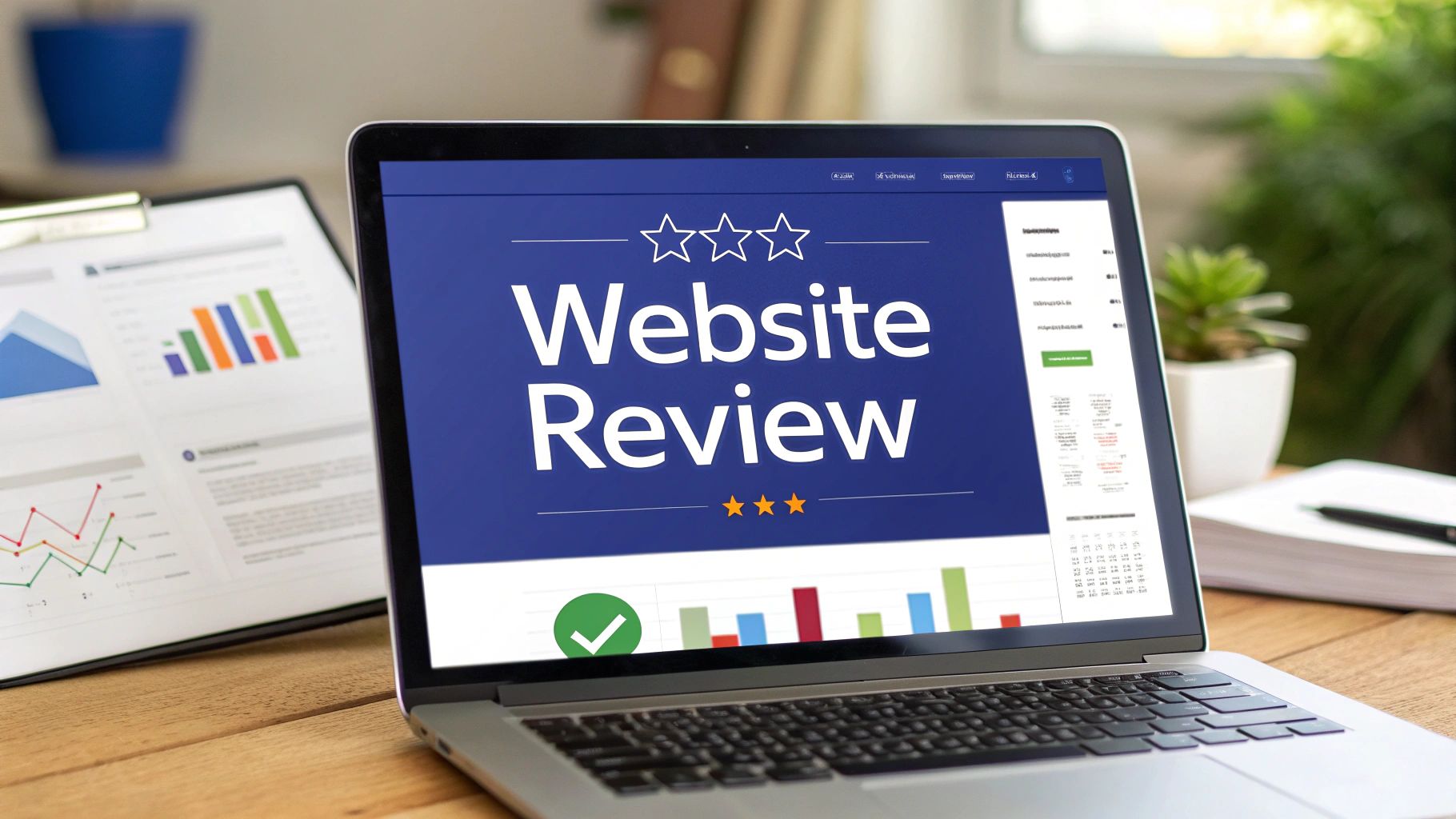Understanding the Strategic Impact of Website Reviews
A professional website review goes far beyond a simple technical checklist. It provides deep insights into how effectively your site engages users, identifies meaningful improvements, and helps achieve key business goals. The companies that invest in regular website evaluation consistently outperform their competitors.
Why Website Reviews Are Essential for Success
Regular website reviews help businesses maximize user engagement and boost conversions. Something as basic as improving the navigation menu can dramatically increase time on site and purchase likelihood. Technical issues like slow page loads that drive away potential customers are also uncovered through review. Leading companies make website evaluation a core part of their strategy.
Reviews also directly impact customer trust and confidence. A well-crafted, intuitive website helps visitors feel secure engaging with your brand. This matters because according to recent research, 4 in 10 consumers rely on reviews as their primary source for researching brands. An impressive 75% read online reviews before choosing businesses, while 93% say reviews influence their purchase decisions. Additionally, 66% of US consumers report being frequently swayed by customer reviews during shopping. For more insights, see online review statistics. Professional website reviews help build brand credibility and foster lasting customer relationships.
Measuring the Impact of Website Improvements
To validate the value of website reviews, track key performance metrics before and after making changes. Important KPIs like bounce rate, conversion rate, and average session duration reveal how users interact with your site. For example, seeing bounce rates decrease after implementing review recommendations confirms improved engagement. These data points demonstrate clear ROI from professional website evaluations.
Leveraging Website Reviews for Continuous Improvement
Smart businesses recognize that effective websites require ongoing optimization. Rather than treating reviews as one-off events, they establish a cycle of evaluation, testing and refinement based on user data and behavior. This commitment to continuous improvement through regular reviews helps companies stay ahead in competitive markets. Make website reviews a consistent practice to unlock your site's full potential and drive sustainable growth.
Building Your Professional Website Review Framework
A strong website review needs more than surface-level checks. You need a methodical process that evaluates both technical performance and user experience. Professional digital experts have found that systematic website reviews catch critical issues that quick scans miss. When you analyze your site consistently over time, you can track improvements and prove the review's value.
Defining Your Review Objectives
Start by setting clear goals for your review. Do you want more conversions, deeper user engagement, or better search rankings? Your specific objectives will guide where you focus your analysis. For instance, if sales growth is the priority, pay special attention to your purchase flow and call-to-action elements. This targeted approach keeps your review efforts aligned with what matters most for your business.
Key Components of a Comprehensive Review
Your website review should examine several core areas. First, run a technical analysis to check site speed, mobile performance, and security – these fundamentals affect every visitor's experience. Next, assess the user experience (UX) by testing navigation paths and content clarity. Watch how people move through your site and whether they can easily find what they need. Then evaluate your content for quality, relevance and search optimization. Finally, review design elements like visual appeal and brand consistency. Good design builds credibility with your audience. For more guidance, check out How to annotate a website for effective research.
Utilizing Tools and Templates for Effective Reviews
Use available tools and templates to make your reviews efficient and thorough. Speed testing tools, UX analysis software, and SEO audit platforms provide key data. Document your process with templates to ensure you check every important element. This structured method helps you compare results across reviews and spot recurring problems.

Prioritizing Recommendations and Presenting Findings
After gathering data, rank your recommendations based on potential impact and ease of implementation. Focus first on high-value changes you can make quickly. Present your findings in clear language without technical jargon. Use visual aids like charts to explain complex information clearly. Consider that 75% of consumers worry about fake reviews, yet they depend on them heavily – 54% only consider businesses with 4+ stars, and 72% say positive reviews increase trust. See more statistics here. When you clearly show the value of your recommendations, you're more likely to get support for making changes. A systematic review process turns subjective opinions into concrete tools for growing your business.
Mastering Technical Performance Analysis

Any thorough website evaluation needs to examine how well the site performs from a technical standpoint. The technical mechanics directly affect site speed, efficiency, and ultimately user satisfaction. Getting these foundational elements right is what separates successful websites from those that fail to keep visitors engaged.
Core Technical Metrics to Evaluate
When assessing a website's performance, focus on these key metrics:
- Load Times: Quick page loads are essential – users abandon slow sites. Research shows that a 1-second delay can reduce conversions by 7%.
- Server Response Time: The speed at which your server handles requests impacts the entire user journey. A responsive server is critical for smooth operation.
- Mobile Performance: With over 50% of web traffic now coming from mobile devices, your site must work flawlessly across all screen sizes and devices.
Identifying and Addressing Performance Bottlenecks
Common issues like oversized images can seriously impact load times. Simple fixes like image compression can make a big difference without sacrificing quality. You'll also want to check for code inefficiencies and excessive server requests that slow things down. Use developer tools to pinpoint exactly where performance drops off.
Tools and Techniques for Benchmarking Performance
Google PageSpeed Insights and similar testing tools give you detailed data about your site's technical performance. They measure critical metrics like Time to First Byte and First Contentful Paint while providing specific recommendations for improvement. Compare your results against industry benchmarks to identify where you're falling short. The goal isn't just faster load times – it's creating a smoother experience that keeps users engaged and boosts conversions. Regular performance monitoring and optimization directly impacts your bottom line through improved user satisfaction and retention.
Evaluating User Experience Through a Strategic Lens
User experience (UX) evaluation is a key component of any thorough website review. A strategic UX assessment looks at how different site elements work together to serve visitors effectively, going beyond just visual design to examine the complete user journey.
Analyzing Navigation, Content, and Conversions
A proper UX review examines three critical areas: site navigation, content organization, and conversion optimization. Key questions include: Can users find what they need quickly? Does information flow logically? Are conversion paths clear and compelling? The answers reveal how well the site achieves its core purpose.
Consider an online store with excellent products but a complex checkout flow. Even with great merchandise, a confusing purchase process leads to abandoned carts and lost revenue. This shows why analyzing conversion paths matters in website reviews. For more insights, check out: Get Actionable Feedback on Website: Effective Strategies and Top Tools.
Identifying UX Improvements for Measurable Results
Strong UX analysis focuses on solutions that boost business metrics. This requires aligning improvements with specific website goals. For a lead generation site, optimization may target form design and call-to-action placement.
Online reviews also impact results significantly. Research shows positive reviews boost spending by 31% for highly-rated businesses. Product pages featuring reviews see conversion rates increase 5x for software and product companies, according to GatherUp's research. This data shows how improving UX to earn positive reviews directly affects revenue.
Balancing Aesthetics and Functionality
While visual appeal matters, it should not overshadow usability. A stunning but hard-to-use website fails to serve its purpose. Smart reviews ensure sites look good while remaining intuitive and accessible. Different audiences have different needs – younger users may prefer bold design while older visitors prioritize simplicity. Finding the right mix for your specific audience is essential.
Platform-Specific Review Optimization Strategies

Every website needs its own specialized review approach. Think of it like a doctor using different tools for different diagnoses – website reviewers must adapt their methods based on the platform's unique purpose. This focused strategy helps identify specific issues and opportunities that lead to more impactful recommendations.
E-commerce Platforms: Prioritizing Conversions
For online stores, converting browsers into buyers is the main goal. Your review should examine how well the site guides customers toward making a purchase. Key areas to evaluate include:
- Product pages: Do they have clear descriptions, high-quality images, and visible customer reviews?
- Checkout flow: Can customers complete purchases quickly and easily, with minimal cart abandonment?
- Mobile experience: Does the site work smoothly on phones and tablets for on-the-go shopping?
A thorough review might reveal that slow-loading product pages are hurting sales potential. Simple fixes like image optimization could boost conversion rates significantly.
Content-Driven Websites: Focusing on Engagement
For blogs and news sites, keeping visitors actively engaged is essential. When reviewing content sites, pay attention to:
- Content value: Does the content inform, engage and serve the target audience well?
- Text presentation: Is content easy to read with good formatting and visual breaks?
- Site organization: Can readers find what they want quickly and intuitively?
Your review may find that dense text blocks and minimal visuals lead to high bounce rates. Better formatting and added images could keep readers on the site longer.
Service-Based Websites: Building Trust and Credibility
Service websites need to establish trust with potential clients. Focus your review on elements like:
- Service clarity: Are offerings explained in simple, understandable terms?
- Social proof: Do case studies and testimonials effectively showcase results?
- Contact options: Can prospects easily reach out to learn more?
Reviews often show that service sites lack compelling client success stories. Adding authentic testimonials builds confidence and drives inquiries. The impact of reviews is significant – 81% of consumers now check Google reviews for local businesses, up from 63% in 2020. Google hosts 73% of all online reviews, far outpacing competitors. See more review data here. This shows why optimizing for Google reviews matters, especially for service businesses.
Crafting Impactful Website Review Reports

Creating a compelling and actionable report is essential after completing a thorough website review. Your report connects analysis to improvement, and its quality directly impacts whether stakeholders will embrace your recommendations. Let's explore proven approaches that successful digital consultants use to create reports that drive real change.
Structuring Your Report for Maximum Impact
A clear structure helps stakeholders understand and act on your findings. Begin with an executive summary that outlines key takeaways and recommended actions. This upfront overview creates context and draws attention to what matters most. Then go deeper into each analysis area, pairing data with expert insights. Don't just state problems – explain their impact and provide specific solutions.
Presenting Data and Recommendations Clearly
Strong data visualization helps communicate complex information effectively. Use charts, graphs, and tables to make findings more digestible and impactful. When presenting recommendations, organize them by potential impact and ease of implementation. Create a clear roadmap that teams can follow. Consider using a simple table to rank suggestions by priority level and required effort.
Communicating Technical Concepts to Non-Technical Audiences
Most stakeholders who read website reviews lack deep technical knowledge. Focus on clear, straightforward language without jargon. Use everyday comparisons to explain complex ideas – like comparing website speed to a car's performance focusing on real-world impact rather than technical details. This approach ensures everyone grasps the key points.
Example Report Structure
- Executive Summary: Core findings and top priorities
- Technical Performance: Speed metrics, mobile testing results, SEO analysis
- User Experience: Navigation review, content effectiveness, conversion optimization
- Content Quality: Relevance assessment, clarity check, SEO evaluation
- Design Evaluation: Visual appeal, brand consistency, accessibility review
- Prioritized Action Plan: Clear roadmap based on impact and resources needed
This structured format promotes understanding and helps teams implement improvements efficiently. Remember – your report's ultimate goal is driving positive change in website performance. A well-crafted report makes that transformation achievable.
Ready to improve your website review process and create reports that get results? BugSmash offers the tools you need to gather feedback effectively, work together seamlessly, and drive meaningful improvements. Start your free trial today and see how a dedicated platform can help.




